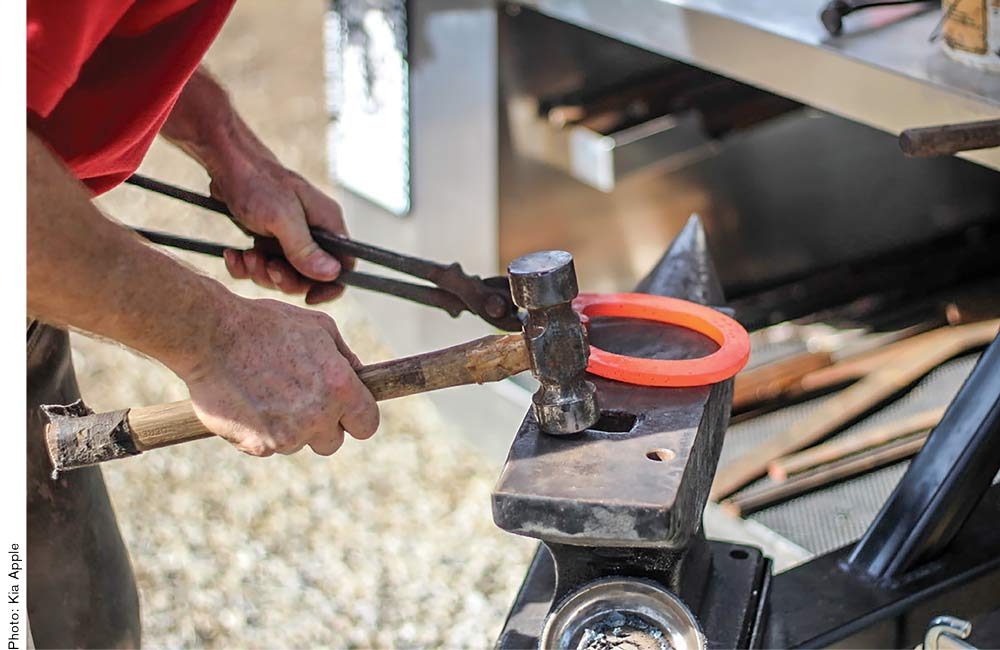I hand make almost all of my shoes, but a 2011 wrist injury made it difficult for me to get through the day for a year or 2. After talking with some folks and getting some lessons, it became so much easier.
One important lesson was applying some kind of stickiness or padding on the hammer handle. I have one hammer that’s wrapped with VetRap (see above photo), just so I don’t have to squeeze so hard. I can just lightly hold it, but it still sticks to my hand. I find that’s great when I need it. At the same time, as the heat of summer sets in and I’m building a lot of shoes, I end up with blisters and calluses. Plus, it gets extremely sticky.
International Horseshoeing Hall of Fame member Bob Marshall was the clinician at an Indiana Farriers Association event a few years ago. He taught me to not grip the handle so hard. You should be able to pull the hammer out of somebody’s hand while they’re working, that’s how lightly you grip it. Bob suggested putting something at the end of the handle to make sure you don’t lose it. I added
1 ½ inches of VetRap at the bottom of most of my handles.
The trick that got me over all of the problems I was having while forging, though, was when Bob had us do a drill where we took four pieces of steel, starting with 12 inches of 3/8 inches by ¾ inches stock, which is pretty light and normal. Then he stepped up each piece until it was ½ inch by 1 ½ inches by 18 inches. We had to make three-heat shoes out of all of them, then stack them up. I admit, when I looked at that, I thought, “Oh man, that’s going to be something.” By the time you have the other three smaller shoes done, that final largest bar was hot enough that it turned easily with the techniques of letting the hammer do the work.
Gain more insight from Cody Bogard by reading “Biosecurity Protocols Limit Disruptions for Indiana Farrier During COVID-19 Pandemic” in the July/August 2020 issue of American Farriers Journal.









Post a comment
Report Abusive Comment